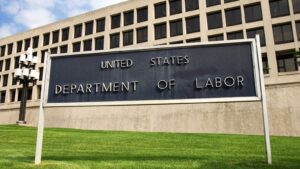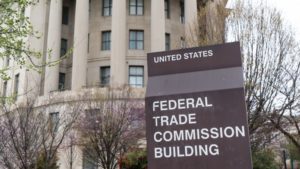Share
Last week, it was revealed that the $349 billion government program established to keep small businesses afloat during the pandemic and resultant economic crisis had already run out of money. Administered by the Small Business Administration (SBA), the Paycheck Protection Program funds were depleted after just 13 days.
During this brief time, the SBA says 1.66 million applications were approved, totaling $349 billion in loans from 4,975 lending institutions. Despite those numbers, the evaporation of funds was a huge blow to countless small businesses across the country. Thankfully, more funds are on the way.
New funds allocated to Paycheck Protection Program
Both the Senate (Tuesday, April 21) and House (Thursday, April 23) passed a new relief package that allocates approximately $484 billion in new funding for small businesses, as well as other priorities like money for hospitals and expanded COVID-19 testing.
Lawmakers have agreed to add an additional $310 billion to the Paycheck Protection Program (PPP) fund. According to industry experts, once the bill is signed into law by the President, it will likely take an additional day before the SBA can reopen the program.
Paycheck Protection Program problems
It is unknown whether the program will be plagued by technical issues with the Small Business Administration’s loan processing system like before, but some delay should be expected given the anticipated high volume after so many small businesses were left out previously.
The program came under additional criticism due to confusion over how a small business is defined. Hundreds of millions of dollars were claimed by large, publicly traded companies, as reported by CNBC. A major part of this was large companies with multiple locations that were eligible to apply per location as long as each location had fewer than 500 employees. This had a lot of people crying foul, which even sparked some those companies (including Shake Shack) to return their loans.
The new round of funds attempts to address this issue, but stops short of solving it. $60 billion has been earmarked for small and medium-sized lenders with the goal of sending more money to smaller and minority-owned businesses, many of whom found themselves turned away from the large banks that processed the majority of the first round loans.
While $310 billion seems like a lot of money (which, of course, it is), but considering the previous $349 billion ran out so quickly and the previously mentioned issues have not been resolved, if your business is in need funds, you need to act quickly. According to CNN experts, the expectation is that the new funds could be exhausted in as little as 10 days.
5 things to know about the Paycheck Protection Program process
Be prepared
This money is going to go quickly. Prepare now before you apply. Decide what lender(s) you want to apply to and what information they require, as they are often different. But one thing all require is payroll and applicable tax information. As a payroll and HR company technology solution, Netchex has you completely covered on both accounts.
To apply, companies will need to provide your average monthly payroll amount, the loan amount you are requesting, and the number of jobs you pay for. To help accurately gather these amounts in time to process applications, Netchex has created a new custom report for all of our clients to easily access this information.
From our COVID-19 Response Portal, administrators can:
- Review information on qualifications and restrictions for these credits so clients can make an informed decision.
- Opt-in or out for the Social Security Deferral credit and the Employee Retention Credit.
- Upon opting into one or both of these credits, the Netchex system will automatically populate invoice credits against their tax liability.
Do your due diligence
Outlined in the SBA’s final application, a business must be able to prove that “current economic uncertainty makes this loan request necessary to support the ongoing operations of the applicant”—which during this time, shouldn’t be difficult for most businesses. Businesses must also be able to show that “funds will be used to retain workers and maintain payroll or make mortgage interest payments, lease payments, and utility payments.” The SBA has the authority to challenge and pursue businesses that violate these terms. So, in the end, make sure you are doing your due diligence and document why your business needs these funds and how you are spending them.
Conflicts with other relief programs
Be sure you are allocating these funds appropriately, and when used in conjunction with other loans, make sure their rules do not conflict with one another. Economic Injury Disaster Loan (EIDL) and PPP loans must be used for different expenses in order for the PPP to be forgivable. Additionally, 75% of PPP loan funds must be used for payroll in order to be forgiven. On the other hand, if you intend to use the Employee Retention Credit, you are not allowed to accept a PPP loan at all. It is crucial to stay up to date on the latest rules and regulations as they are clarified by the SBA.
Know your options
In the first go-round, many businesses only applied for the loans at the regular bank they conduct daily business with—this is not a requirement. And while there numerous financial institutions taking applications, this does not mean you should submit multiple applications. Your best bet is to apply as soon as possible, as some lenders are already queueing up applications for as soon as the process is officially opened again.
Limit your expectations
The money has already run out once, and it will likely happen again—and soon. Countless businesses are likely to be left out once again, but hopefully, more money will be funneled into the program for a third time (or more). If your application is not accepted yet again, don’t panic. Make sure your prepared and ready to go again as soon as more funds are made available. This will likely be a long, drawn-out process, so try and be patient.
Netchex remains fully operational through this unprecedented time. Our staff is hard at work for businesses like yours that are working diligently to remain in operation, adapt their policies, and ensure the safety of their employees. Netchex is here to help you accomplish all of this and more.
Related articles

HR Legislation: 2024 Updates to Independent Contractors and Joint Employer Rules

DOL Proposes New Overtime Rules: What to Know and How to Prepare

What Employers Should Know About the Form I-9 Update



